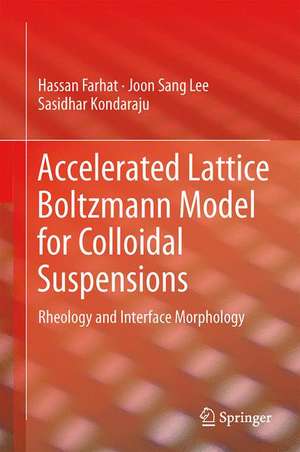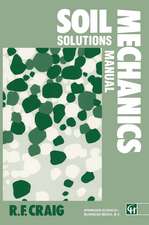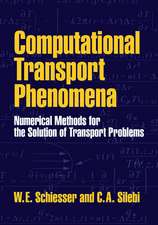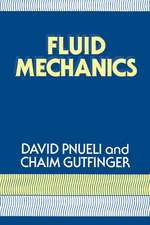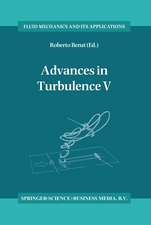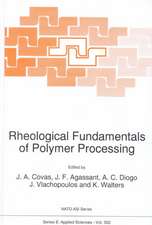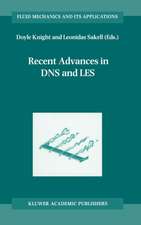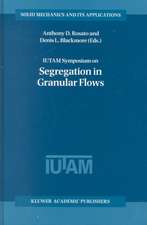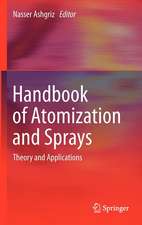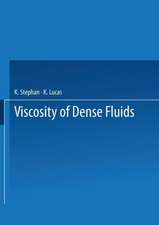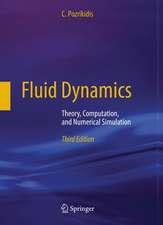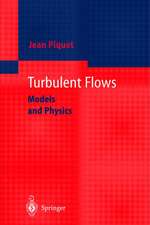Accelerated Lattice Boltzmann Model for Colloidal Suspensions: Rheology and Interface Morphology
Autor Hassan Farhat, Joon Sang Lee, Sasidhar Kondarajuen Limba Engleză Hardback – 12 apr 2014
Accelerated Lattice Boltzmann Model for Colloidal Suspensions introduce the main building-blocks for an improved lattice Boltzmann–based numerical tool designed for the study of colloidal rheology and interface morphology. This book also covers the migrating multi-block used to simulate single component, multi-component, multiphase, and single component multiphase flows and their validation by experimental, numerical, and analytical solutions.
Among other topics discussed are the hybrid lattice Boltzmann method (LBM) for surfactant-covered droplets; biological suspensions such as blood; used in conjunction with the suppression of coalescence for investigating the rheology of colloids and microvasculature blood flow.
The presented LBM model provides a flexible numerical platform consisting of various modules that could be used separately or in combination for the study of a variety of colloids and biological flow deformation problems.
Preț: 641.71 lei
Preț vechi: 754.95 lei
-15% Nou
Puncte Express: 963
Preț estimativ în valută:
122.81€ • 133.35$ • 103.16£
122.81€ • 133.35$ • 103.16£
Carte tipărită la comandă
Livrare economică 22 aprilie-06 mai
Preluare comenzi: 021 569.72.76
Specificații
ISBN-13: 9781489974013
ISBN-10: 1489974016
Pagini: 168
Ilustrații: VIII, 158 p. 91 illus., 88 illus. in color.
Dimensiuni: 155 x 235 x 20 mm
Greutate: 0.45 kg
Ediția:2014
Editura: Springer Us
Colecția Springer
Locul publicării:New York, NY, United States
ISBN-10: 1489974016
Pagini: 168
Ilustrații: VIII, 158 p. 91 illus., 88 illus. in color.
Dimensiuni: 155 x 235 x 20 mm
Greutate: 0.45 kg
Ediția:2014
Editura: Springer Us
Colecția Springer
Locul publicării:New York, NY, United States
Public țintă
Professional/practitionerCuprins
Preface.- 1. Introduction.- 2. Overview of Related Studies.- 3. Accelerated Lattice Boltzmann Method.- 4. Hybrid LBM for Surfactant-Covered Droplets.- 5. Suppressing the Coalescence in the LBM: Colloids Rheology.- 6. Non-Uniform Interfacial Tension LBM for RBC Modeling.- Appendix.- References.- Index.
Notă biografică
Dr. Hassan Farhat received his M.S. in Mechanical Engineering from the Higher Institute of Mechanical and Electrical Engineering, Varna, Bulgaria. He finished a second M.S. and Ph.D. in Mechanical Engineering from Wayne State University, Detroit, Michigan, USA. During his Ph.D., he worked on numerical simulations of multiphase and multicomponent fluids as a platform for the study of Colloidal suspensions using the lattice Boltzmann method (LBM). He is currently working as Engineering Specialist in the automotive industry and part time faculty at Wayne State University.
Dr. Joon Sang Lee received his B.S., M.S. and Ph.D. in Mechanical Engineering from Iowa State University. During his Ph.D. he worked on large eddy simulation of turbulent flows with heat transfer. Before he joined the School of Mechanical Engineering at Yonsei University, South Korea as a professor he was Assistant Professor of Mechanical Engineering at Wayne State University, Detroit, Michigan, USA. His research interests include Computational Fluid Dynamics (CFD), complex flows and biological (rheological) flows. Since 2004 he has published more than 40 journal articles collaborating with National Institute of Standard and Technology (NIST), U.S. Army Research Laboratory, Center for Ocean Land Atmosphere Studies, George Mason University and University of Maryland.
Dr. Sasidhar Kondaraju received his B.E. in Mechanical Engineering from Osmania University, Hyderabad with distinction. He finished his M.S. and Ph.D. in Mechanical Engineering from Wayne State University, Detroit, Michigan, USA. During his Ph.D., he worked on numerical simulations of nano-particles suspended in fluid medium to observe their effect on heat transfer enhancement in nanofluids. After finishing his Ph.D., he worked for one year as a research associate at the University of Arizona, Tucson, Arizona, USA, and then as a research professor in Yonsei University, Seoul, South Korea fortwo years. Presently he is an INSPIRE faculty at IIT Delhi.
Dr. Joon Sang Lee received his B.S., M.S. and Ph.D. in Mechanical Engineering from Iowa State University. During his Ph.D. he worked on large eddy simulation of turbulent flows with heat transfer. Before he joined the School of Mechanical Engineering at Yonsei University, South Korea as a professor he was Assistant Professor of Mechanical Engineering at Wayne State University, Detroit, Michigan, USA. His research interests include Computational Fluid Dynamics (CFD), complex flows and biological (rheological) flows. Since 2004 he has published more than 40 journal articles collaborating with National Institute of Standard and Technology (NIST), U.S. Army Research Laboratory, Center for Ocean Land Atmosphere Studies, George Mason University and University of Maryland.
Dr. Sasidhar Kondaraju received his B.E. in Mechanical Engineering from Osmania University, Hyderabad with distinction. He finished his M.S. and Ph.D. in Mechanical Engineering from Wayne State University, Detroit, Michigan, USA. During his Ph.D., he worked on numerical simulations of nano-particles suspended in fluid medium to observe their effect on heat transfer enhancement in nanofluids. After finishing his Ph.D., he worked for one year as a research associate at the University of Arizona, Tucson, Arizona, USA, and then as a research professor in Yonsei University, Seoul, South Korea fortwo years. Presently he is an INSPIRE faculty at IIT Delhi.
Textul de pe ultima copertă
Colloids are ubiquitous in the food, medical, cosmetics, polymers, water purification, and pharmaceutical industries. The thermal, mechanical, and storage properties of colloids are highly dependent on their interface morphology and their rheological behavior. Numerical methods provide a convenient and reliable tool for the study of colloids.
Accelerated Lattice Boltzmann Model for Colloidal Suspensions introduce the main building-blocks for an improved lattice Boltzmann–based numerical tool designed for the study of colloidal rheology and interface morphology. This book also covers the migrating multi-block used to simulate single component, multi-component, multiphase, and single component multiphase flows and their validation by experimental, numerical, and analytical solutions.
Among other topics discussed are the hybrid lattice Boltzmann method (LBM) for surfactant-covered droplets; biological suspensions such as blood; used in conjunction with the suppression of coalescence for investigating the rheology of colloids and microvasculature blood flow.
The presented LBM model provides a flexible numerical platform consisting of various modules that could be used separately or in combination for the study of a variety of colloids and biological flow deformation problems.
Accelerated Lattice Boltzmann Model for Colloidal Suspensions introduce the main building-blocks for an improved lattice Boltzmann–based numerical tool designed for the study of colloidal rheology and interface morphology. This book also covers the migrating multi-block used to simulate single component, multi-component, multiphase, and single component multiphase flows and their validation by experimental, numerical, and analytical solutions.
Among other topics discussed are the hybrid lattice Boltzmann method (LBM) for surfactant-covered droplets; biological suspensions such as blood; used in conjunction with the suppression of coalescence for investigating the rheology of colloids and microvasculature blood flow.
The presented LBM model provides a flexible numerical platform consisting of various modules that could be used separately or in combination for the study of a variety of colloids and biological flow deformation problems.
Caracteristici
Provides an efficient LBM based numerical model for the study of colloids and in particular emulsions and biological fluids Presents three novel schemes for the improvement of the multi-phase LBM manely the migrating multi-block, surfactant covered droplets and suppression of coalescence with attached pseudo-code Explores a large variety of physics of fluids, such as buoyancy, shear lift, coalescence, droplets deformation, aggregation and disaggregation and rheology of emulsions
